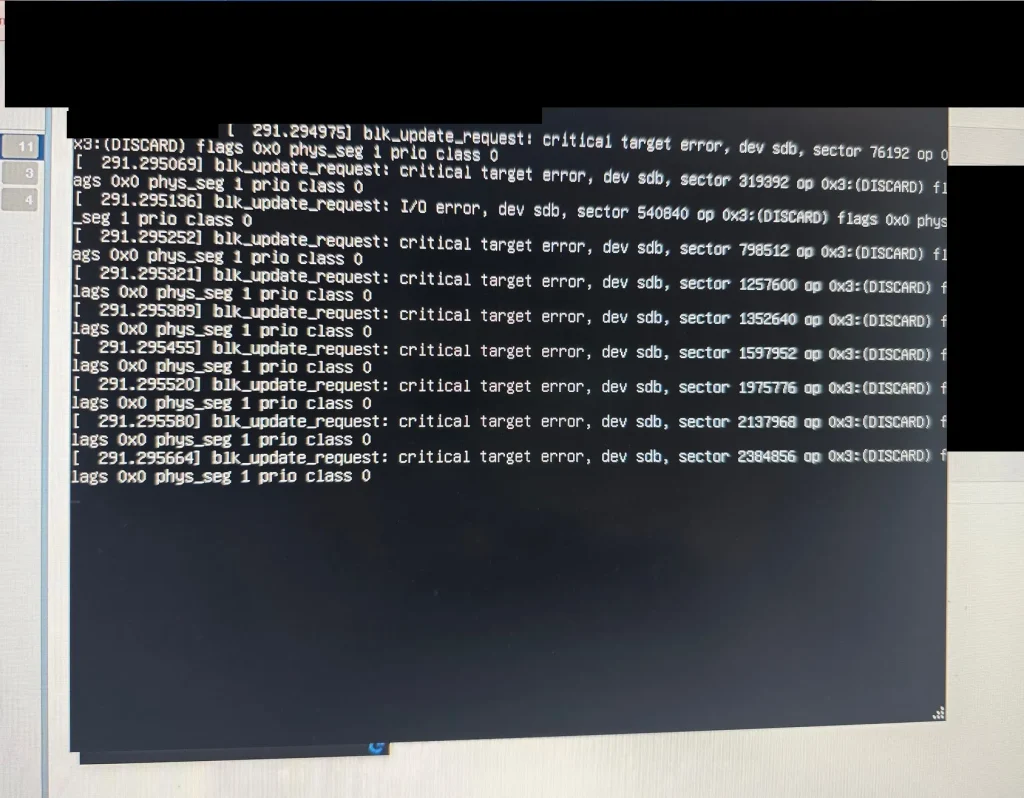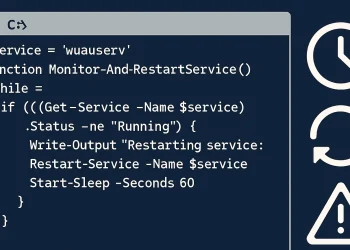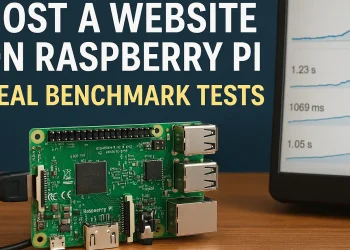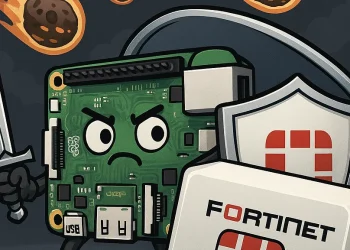“blk_update_request: critical target error” on Ubuntu Server
In this guide, you’ll learn how to fix the “blk_update_request: critical target error” on Ubuntu Server with SSD when it involves the
dev sdbdevice and a failing DISCARD operation (TRIM command).
If you’re running an Ubuntu Server on Esxi host and encountering the following error in your system logs:
blk_update_request: critical target error, dev sdb, sector 197556 op 0x3: (DISCARD)
— you’re not alone :)- This message typically points to an I/O operation failure on a storage device (/dev/sdb in this case), and it’s often associated with the DISCARD operation, which is related to TRIM functionality on SSDs.
In this article, we’ll explore what this error means, why it occurs, and how you can fix it on both SSD and HDD storage devices.

Understanding the “blk_update_request: critical target error” Error
Let’s break down the error:
blk_update_request: critical target errorThis means the kernel attempted to perform a block-level operation and the request failed critically.
dev sdb, sector 197556The error occurred on device /dev/sdb, at the specified sector.
op 0x3: (DISCARD)The operation attempted was a DISCARD, also known as a TRIM command, which helps SSDs manage unused space by clearing blocks.
So, what does it mean?
The kernel tried to issue a TRIM operation to /dev/sdb, but the operation failed — possibly due to hardware incompatibility, a faulty disk, or misconfigured mount options.
Prerequisits
Before you begin troubleshooting the blk_update_request: critical target error, make sure you have the following in place:
- ✅ A recent backup of any important data or configuration files associated with the affected disk (
/dev/sdb). It’s essential to prevent data loss during disk operations or configuration changes. You can usersyncortarfor a quick backup. Here’s an example usingrsync:
sudo rsync -avh /mnt/data/ /mnt/backup/- ✅ Sudo (root) privileges on the Ubuntu server to execute system-level commands and edit configuration files such as
/etc/fstab. To verify if you have sudo access, run:
sudo -vIf the command doesn’t return any error, you have the necessary privileges.
Steps to Solve the Error
Step 1: Identify the Disk Type (SSD or HDD)
Different devices handle the DISCARD operation differently. To check whether /dev/sdb is a spinning hard drive (HDD) or a solid-state drive (SSD), run:
cat /sys/block/sdb/queue/rotational- Output
0→ SSD - Output
1→ HDD
Note: The TRIM (DISCARD) operation is only relevant for SSDs. Using it on HDDs may cause errors.
Step 2: Check the Disk Health (SMART Status)
Regardless of the disk type, it’s important to rule out hardware failure:
sudo apt install smartmontools
sudo smartctl -a /dev/sdbLook for key indicators:
Reallocated_Sector_CtCurrent_Pending_SectorPower_On_HoursSMART overall-health self-assessment test result
If SMART reports any FAILING_NOW status or a high number of reallocated/pending sectors, the disk might be failing.
Step 3: Adjust Mount Options (Disable DISCARD)
If your disk is not an SSD, or your SSD doesn’t support online TRIM properly, you can disable the discard option in /etc/fstab.
1. Open the fstab file:
sudo nano /etc/fstab2. Find the line for /dev/sdb (or its mount point, like /mnt/data), and remove discard from the options.
Before:
/dev/sdb1 /mnt/data ext4 defaults,discard 0 2After: -> Remove discard option
/dev/sdb1 /mnt/data ext4 defaults 0 23. Save the file and reboot your system:
sudo rebootAdditional Checks and Tips
- Check dmesg logs for more disk-related messages:
dmesg | grep sdb- Ensure proper cabling if you’re running on physical hardware. A loose or damaged SATA/power cable can cause intermittent I/O errors.
- If using RAID or LVM, check the health of the array or volume group.
Conclusion
The blk_update_request: critical target error related to the DISCARD operation is a common issue, especially on systems that are misconfigured to use TRIM on unsupported hardware. With a few diagnostic steps — checking your disk type, disabling the discard option, and switching to scheduled TRIM — you can resolve the issue and keep your Ubuntu server running smoothly.
If your disk shows signs of physical failure during the SMART check, consider replacing it to avoid future data loss.
Articles With Similar Topics
Discover more articles with similar topics:
- NextCloud: Change – Replace Hard Drive for the Data
- How to Extend Partition on Ubuntu with fdisk
- Solutions: Add and Mount New Hard Drive (HDD or SSD) to Ubuntu














